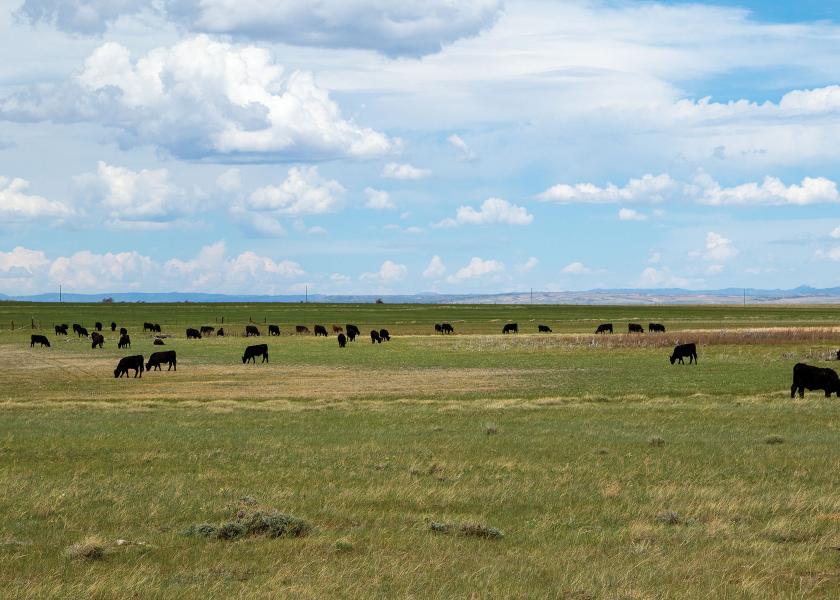Manage Pastures Now for Improved Drought Recovery Later

Dry weather occurs at some point nearly every summer. But in the last few years we appear to be in a dry cycle with many areas in the West experiencing much lower than normal rainfall. Over the last 365 days the Mesonet system shows that Oklahoma has experienced slight reductions in rainfall in Central Oklahoma to severe reductions in rainfall in western Oklahoma and the Panhandle.
Failure to take preventative action and plan ahead at early signs of drought results in overgrazing damage to pastures, excessive feeding, and herd liquidation. Although drought cannot be avoided entirely, a good forage management plan will lessen the impact on forages and hasten pasture recovery when growing conditions return. Planning ahead for forage requirements helps to maintain a herd through the drought crisis.
Drought management for pastures includes three primary categories:
- Develop a balanced seasonal forage system to avoid drought impacts.
A balanced forage program and good pasture grazing plan reduce the impact of a drought and extend the grazing season. Extending the grazing season has a strong positive impact on profitability of livestock operations. Many farms already have an adequate forage base to produce enough forage for the livestock, but management is often focused on producing hay for a long hay feeding season instead of producing more lower-cost grazing days. The most important part of a balanced forage system is the planning and strategy used with the existing forages. Longer grazing seasons can usually be achieved by simply changing forage management. Planning a longer grazing season requires a seasonal approach to forage production and management. Spring, summer, and fall seasons are managed as 100 days each, leaving a 65-day winter season. Forage management plans should be made at least one season in advance to ensure timeliness of implementation and to allow options in case of unexpected growing conditions such as drought. Plans for spring pasture are made in fall and winter; plans for summer are made in winter and spring; and so on. Various forages should be used to fill out a grazing program, using the ones that fit your environment and fill the desired niche are important considerations.
2) Manage forage for efficient utilization during drought.
It always rains after a drought. It is important to manage pastures carefully during a drought to ensure good recovery when the drought ends. Management decisions should be made quickly during early stages of drought to maintain enough forage to feed the herd. Culling poor performing animals is one choice to reduce the amount of forage needed, but improving pasture management can also be effective. Producers who plan forage and grazing practices ahead get themselves into a position to take advantage of better growing conditions when those conditions eventually return. When pastures become grazed short and producers are feeding hay, management strategies must focus on pasture recovery after drought. Main points to consider for managing forages during dry weather include the following:
- Avoid continued overgrazing before pastures become grazed short. Overgrazing weakens plants and leads to shortened root systems causing them to respond more slowly to rain and fertilizer. Overgrazing causes higher soil temperatures because it removes residue that shades the soil surface. During the 2011 drought in Oklahoma, soil temperatures in bare, overgrazed pastures reached as much as 150 degrees.
- Rotational grazing is a good drought management tool. Rotational grazing helps maintain forage growth longer into a drought period than continuous grazing. Rotating pastures during drought conditions can help protect standing forage for later grazing and will improve recovery due to more rest time for each paddock.
- Feeding hay and limit grazing during dry weather can stretch available forage on drought-stressed pastures. If all pastures are already grazed short and no regrowth is being produced then cattle can be shut in a single “sacrifice pasture” and fed hay until better growing conditions arrive. This practice limits overgrazing damage to one pasture and helps protect forage in other pastures that will needed for later grazing.
3) Manage pastures for recovery after drought.
Some pasture forages will be killed or severely thinned by drought. Evaluate pastures and determine which fields will recover, which fields need overseeding, and which fields need complete renovation. Good assessment of actual forage damage and weed pressure is critical.
Soil testing all pastures is necessary. Not all pastures will show the same level of drought damage so improvement strategies need not be the same across the farm. Some pastures may fully recover with time and management while others may need complete renovation.
The following options should be considered to improve drought recovery of forages:
- Manage to let the surviving forages regrow without reseeding
- Try to thicken the thin pastures with more of the same species
- Add legumes, winter annuals, or forage brassica to thin fields
- Renovate severely damaged pastures by converting to other forages
When rainfall occurs and pastures begin to greenup, defer grazing to allow top-growth and roots to regrow. During and after recovery, graze the best pastures last. This practice will help ensure the best pastures continue to be the best pastures. Grazing too soon before adequate recovery will cause stand thinning, weed encroachment, and decline of pasture condition.
Scout pastures closely for weeds. Some weeds such as wooly croton are avoided by livestock and populations can build unnoticed. Winter annual weeds will germinate in fall at the same time as volunteer clover or cool-season grasses. Weeds can take over a weakened pasture quickly when rainfall occurs, preventing forage regrowth and sharply reducing volunteer reseeding of desirable forages. Use concentrated grazing pressure, mowing, or herbicide as appropriate to control specific weed species.
Dave Lalman, OSU Extension beef cattle specialist, has management advice for producers making tough decisions because of drought conditions. He offers culling guidance and encourages viewers to work with local OSU Extension agricultural educators across the state when making decisions. https://www.youtube.com/watch?v=GCbt_7Tn8Yg







